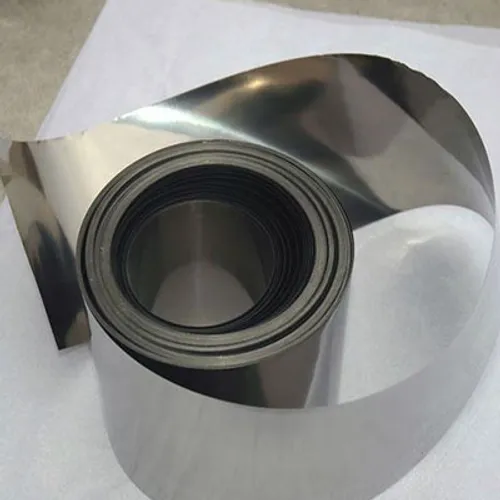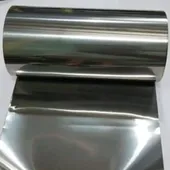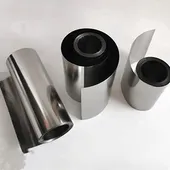
Choosing the Right Titanium Foil: A Guide to Grades and Manufacturing
When selecting titanium foil for your project, understanding the different grades is crucial. The choice directly impacts the foil’s strength, formability, and corrosion resistance. This guide will demystify titanium foil grades and provide a glimpse into how this incredible material is made.
Understanding Titanium Foil Grades: Commercially Pure (CP)
For foil applications, Commercially Pure (CP) grades are the most common. The primary difference is the allowable content of interstitial elements like oxygen and iron, which influences mechanical properties.
-
Grade 1 (CP-4):
- Key Property: Highest purity, lowest strength, and excellent ductility/formability.
- Best For: Applications requiring complex forming or deep drawing, such as chemical processing vessel linings and architectural elements. It also offers the best corrosion resistance.
-
Grade 2 (CP-3):
- Key Property: The “workhorse” of CP titanium. It offers a perfect balance of moderate strength, excellent formability, and weldability.
- Best For: A vast range of applications, including heat exchangers, aerospace components, and medical casings. It is the most widely used grade.
-
Grade 4 (CP-1):
- Key Property: The strongest of the CP grades. Its higher strength comes at the cost of reduced formability compared to Grades 1 and 2.
- Best For: Applications where higher strength is needed without the complexity of an alloy, such as airframe components and cryogenic vessels.
| Grade | Purity | Strength | Formability | Common Use Cases |
|---|---|---|---|---|
| Grade 1 | Highest | Lowest | Excellent | Deep Drawing, Chemical Processing |
| Grade 2 | High | Medium | Very Good | General Purpose, Heat Exchangers |
| Grade 4 | Good | Highest (CP) | Fair | Airframe, High-Strength Parts |
A Note on Alloy Grades
While less common in ultra-thin foil form, alloys like Grade 5 (Ti-6Al-4V) exist. This alloy offers significantly higher strength but is more challenging to form into a thin foil.
How Titanium Foil is Made: The Rolling Process
Creating something as thin and precise as titanium foil is a marvel of engineering. The primary manufacturing method is a multi-step rolling process:
- Starting Material: The process begins with a cast titanium ingot.
- Hot Rolling: The ingot is heated and passed through rollers to reduce its thickness into a slab.
- Cold Rolling: The process switches to cold rolling (at room temperature) for a smoother finish and tighter tolerances.
- Annealing: Between rolling passes, the foil is heat-treated in a vacuum to relieve internal stresses and restore ductility.
- Final Pass: The final rolling pass achieves the target thickness and surface finish, often using specialized mills for exceptional precision.
Your Partner in Material Selection: Choosing the right grade of titanium foil is critical. Our team of experts is ready to help you navigate these options to find the perfect solution for your needs.
Quick Contact
Related Products
Product Categories
- Titanium Anode Basket 1
- Titanium Foils 1
- Titanium Pipes 1
- Titanium Rods 1
- Titanium Tubes 1
- Titanium Wires 3
- Nuts & Bolts 1
- Special Titanium Alloys 1
- Titanium Anodes & Electrodes 1
- Titanium Equipment 1
- Titanium Mesh 1
- Titanium Sheets & Plates 1
- Titanium rods 3
- Titanium foils 3
- Titanium sheets and plates 3
- Titanium pipes 3

